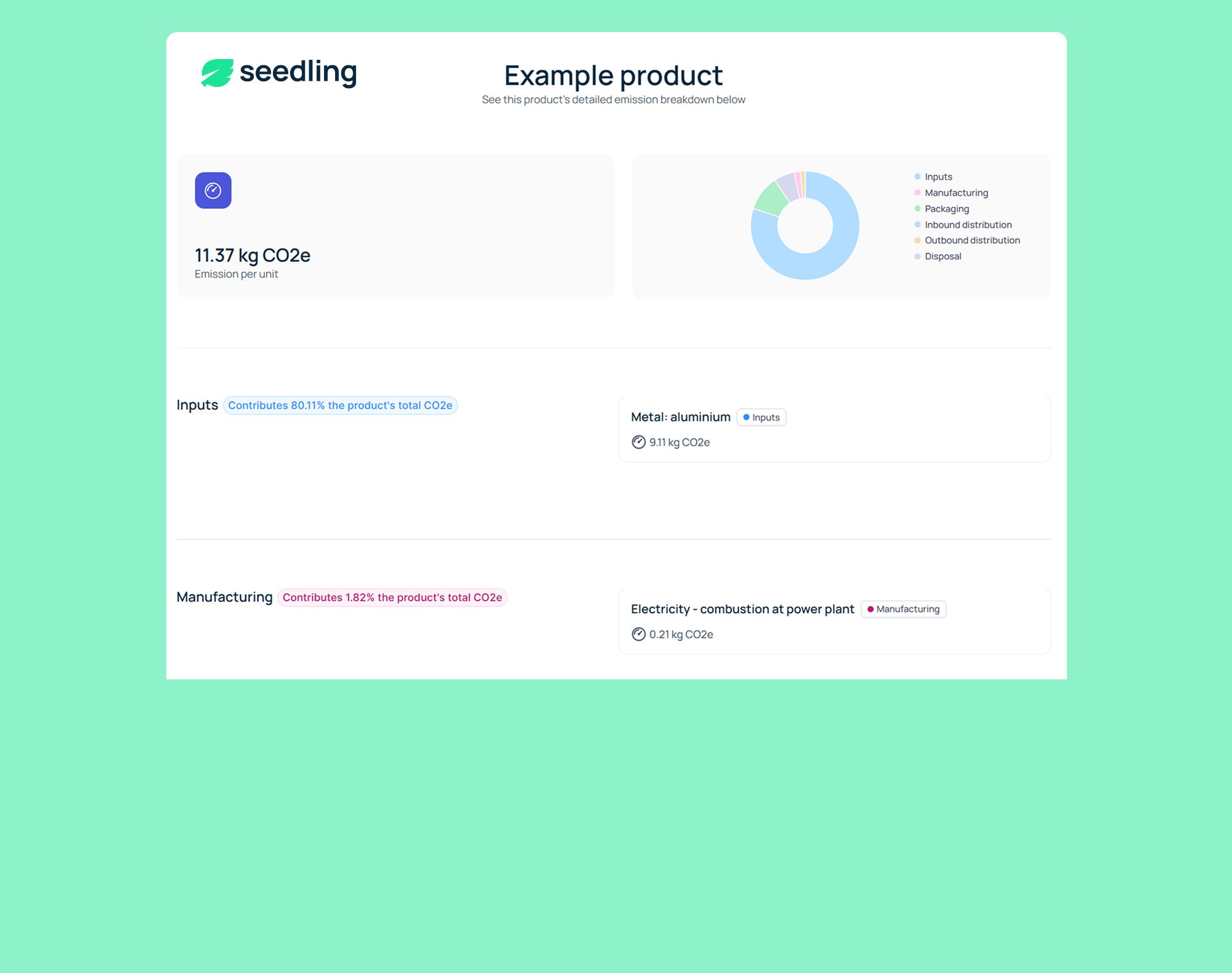Product Carbon Footprints
Trusted By 300+ businesses






.png)
























.png)


















With easy-to-use tech and 1:1 expert support, Seedling makes it simple to accurately track, reduce, and report product-level emissions.
Our Product Carbon Footprint tool helps product-based businesses to:
.png)



.png)


Seedling is designed for small and mid-sized teams - we streamline product footprints, without comporising on rigour.

We're not just a software platform - we're with you 1:1 throughout the whole process.

Measure, track and report the carbon impact of your entire business, as well as your products, in one place.
Guided by your adviser, gather and input the data needed for your product carbon footprints.
Our easy-to-use platform and expert support make this doable in days, not months.
Work with your adviser to understand your hotspots and build a carbon reduction plan.
Get bespoke support, tailored to your business and sector-specific challenges.
Your product-level emissions are ready to share on your product impact page - just copy a link or embed a QR code on your packaging.
Your questions answered
Following guidance from the GHG Protocol and ISO 14067 standards, we first define the product to be measured (e.g. 1 finished unit of product X) and the boundaries (or scope) of the assessment - usually cradle-to-grave. We'll then analyse the input/output flows of the product (things like ingredients or materials on the input side, and waste on the output side). You'll then input data relating to those processes, and we'll calculate emissions on that basis.
It depends on the sector and your geography. The EU is rolling out regulation on Digital Product Passports which mandate product-level impact assessments for some products. However, other businesses may not be directly affected, but still required to submit product-level data as part of tenders or client requests.
Once you've measured your product-level emissions, you can easily share the results using your product impact page - an online dashboard showing a full breakdown of the product's emissions and key hotspots. Simply share a link, or add a QR code to labeling or packaging.
Both are standards that specify how product-level emissions should be calculated, with some differences.
The GHG Protocol is a framework/guideline (flexible, widely adopted, covers organizations, value chains, and products).
ISO 14067 is a formal standard (more prescriptive, mainly for product-level footprints, often used for certification/verification).
Using our Product Footprint module, you can calculate product-level emissions as soon as you have the data ready to input.
Book a demo or get in touch and we'll be happy to help. Or follow this step-by-step guide to measuring your business's carbon footprint.